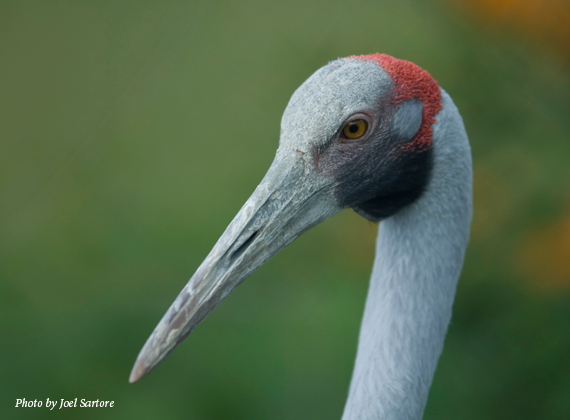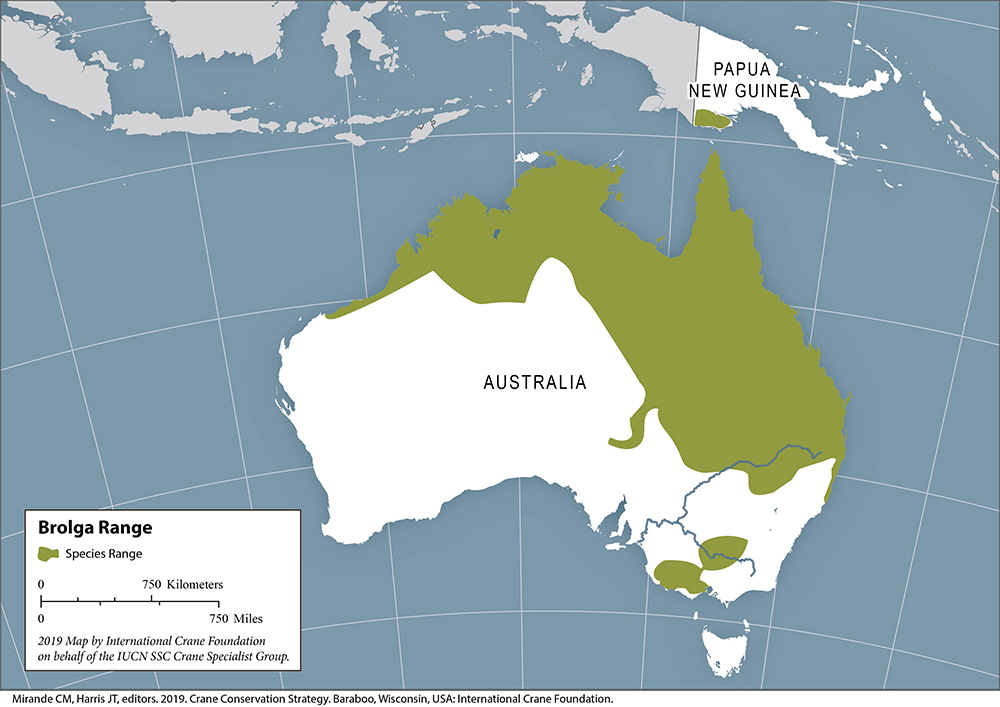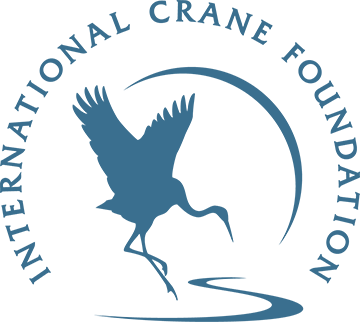
SPECIES: Grus rubicunda
HEIGHT: ~ 161 cm, 5 ft
WEIGHT: ~ 6 kg, 13 lbs
WINGSPAN: ~ 180 cm, 6 ft
POPULATION: 50,000 – 100,000
TREND: Northern Australia population stable; Southwestern Australia population decreasing; New Guinea population unknown
STATUS: IUCN: LC; Cites Appendix II
IDENTIFICATION
Adults – bare crown covered with greenish-grey skin, face, cheeks and pendulous throat pouch have red skin, plumage is light bluish grey to grey, black legs; juveniles – pale grey body feathers, cinnamon-brown head, dark brown eyes.
RANGE
The Brolga occurs throughout northern and eastern Australia and in limited areas of Papua New Guinea. There are also small populations in southeastern Australia. Brolgas are non-migratory but move in response to seasonal rains.

DIET
Bulkuru tubers, wetland plants, upland plants and grains, insects, mollusks, crustaceans and frogs.
THREATS
Habitat loss, prolonged drought and desertification, especially related to climate change.
OUR PLAN
Monitoring the status of cranes and their habitats from South Asia to Australia and implementing conservation strategies to address emerging threats. We are:
- Using range-wide networking and periodic workshops to share information, and develop and test solutions to common threats in different crane landscapes.
Learn more about the Brolga:
